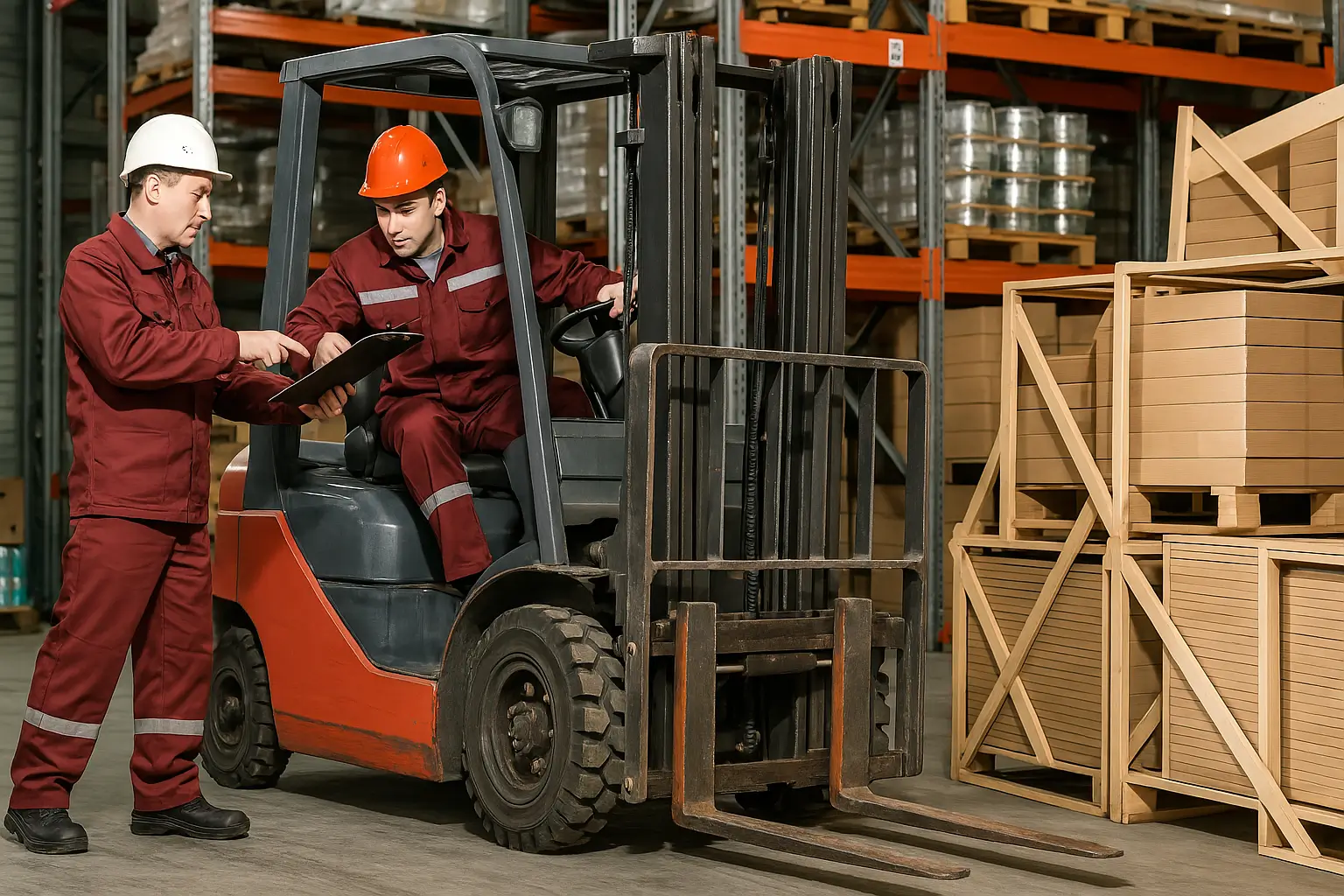When using forklifts for ammunition and explosives (AE), safety protocols are crucial. Following them helps keep operations efficient and prevents serious accidents. DA PAM 385-64 is the Army’s guide on Ammunition and Explosives Safety Standards. It states that specific rules must be followed when using forklifts to lift pallets of AE. This report outlines the requirements and best practices for safely handling hazardous materials.
DA PAM 385-64 Requirements for Lifting AE Pallets
DA PAM 385-64 says to use pallet adapters or lift bars made for the specific pallet type. This is important when using a forklift to lift ammunition and explosives.
This requirement is key for safely handling explosive materials. Improper lifting equipment can cause accidents, shifting loads, or drops. These issues might lead to detonation or damage to sensitive munitions.
The regulation is part of a larger set of safety standards. These standards aim to reduce risks when handling ammunition and explosives. These standards address key parts of AE operations. They include transportation, storage, and handling procedures. All personnel must follow these when working with hazardous materials.
Material Handling Equipment Requirements
MHE must be properly maintained and inspected regularly for safety and serviceability.
Only approved MHE should be used in areas containing explosives.
Equipment must be load tested prior to use with ammunition and explosives.
Forklifts and other MHE must follow explosives safety standards for handling ammunition.
Pre-Lift Inspection and Preparation
Pallet and Load Inspection
Before attempting to lift pallets of AE, a thorough inspection is mandatory:
Check palletized or containerized munitions for broken banding. Also, look for any damage to the containers or pallets.
Damaged items must be repaired or replaced before handling
Check the load carefully. Make sure it’s suitable, undamaged, and stable for the forklift.
Use pallets that can support the weight of the load. Check for damaged, deformed, or decaying pallets before loading.
Vehicle and Equipment Checks
Prior to loading ammunition on any motor vehicle:
- The vehicle needs an inspection. This ensures it meets the standards for moving ammunition and explosives.
- MHE must have been load tested
- Brakes must be set before loading and unloading
- Wheels must be chocked
- Munitions must be properly prepared and packaged
Proper Lifting Techniques
When operating a forklift to lift pallets of AE, operators should:
Position the forklift properly with forks level and aligned with the pallet openings
Enter the pallet straight, not at an angle, to avoid knocking the pallet over
Leave appropriate clearance between the load backrest and the pallet
Lift the load slowly and carefully to clear the floor or storage rack
- Once clear of obstructions, secure the load by:
- Driving forward to eliminate any gap
- Tilting the mast back slightly to ensure load stability during transport
- Ensuring the load is evenly balanced on the forks
Safety Considerations Specific to AE Handling
Electrostatic Discharge Prevention
Electrostatic discharge (ESD) presents a significant hazard when handling ammunition and explosives:
ESD can seriously harm or destroy sensitive electronics like sensors and detonators. It can also affect ammunition and explosives.
DA PAM 385-64 requires the use of anti-static products in areas where AE is handled.
Create an ESD-protected area (EPA). Ensure it has proper grounding, controls humidity, and displays the right signage.
Tools and Equipment Safety
When working with AE:
Use only non-sparking tools in hazardous areas. These include bronze, lead, beryllium alloys, K-model, or polymers.
All electrical equipment must be of the standard explosion-proof type
Only use well-maintained tools near flammable dust, gases, vapors, or exposed explosives.
Personnel Requirements and Training
Safe handling of AE requires properly trained personnel:
Operators must be trained and certified according to DA PAM 385-64 requirements
Personnel handling AE must wear the right protective gear. This includes gloves, safety shoes, and eye protection.
Training should include specific instruction on the hazards of handling ammunition and explosives
Explosives safety training is required for all personnel who conduct activities involving munitions
Personal Protective Equipment (PPE)
When handling palletized munitions, at minimum, handlers must wear:
- Proper protective gloves
- Safety shoes
- Eye protection
Transportation and Movement Procedures
After securely lifting the pallet of AE:
Move the loaded forklift carefully and at a reasonable speed.
Keep the load as low as possible while maintaining adequate ground clearance.
Keep the load tilted slightly back to prevent it from tipping forward.
Plan your route early. This helps you avoid obstacles, rough surfaces, inclines, and busy areas.
Watch your surroundings and pay attention to signs. Look out for maximum floor load limits and clearance heights.
Emergency Procedures and Documentation
DA PAM 385-64 requires:
Development of plans to provide safety, security, and environmental protection in emergency response.
Firefighter training and the effectiveness of plans and procedures for handling AE emergencies.
Availability of proper firefighting equipment and appropriate fire symbols and chemical hazard symbols.
- Storage inventory documentation shows:
- AE by Department of Defense Identification Code
- National stock number
- Nomenclature
- Quantity
- Total net explosive weight
Useful Summarization Table
A table summarizing basic requirements and best practices when lifting pallets of ammunition and explosives (HE) with a forklift, based on DA PAM 385-64 and related safety standards:
| Category | Requirement/Best Practice |
|---|---|
| Equipment | Use pallet adapters or lift bars specifically designed for the pallet type |
| Operator Training | Only trained and licensed personnel may operate forklifts with AE |
| Inspection | Inspect pallets, containers, and forklift before use; repair/replace damaged items |
| Load Limits | Do not exceed the forklift’s rated load capacity |
| Handling | Do not tumble, drag, drop, throw, or roll munitions; use deliberate, careful movements |
| Personal Protective Equipment (PPE) | Wear gloves, safety shoes, and eye protection during handling |
| Ground Guides | Use ground guides due to limited operator visibility when moving AE |
| Forklift Operation | Tilt forks back and keep load low (no more than 1 foot off ground) during movement |
| Stacking | Ensure stable, accessible stacking; band loose packages for movement or storage above ground |
| Lifting Equipment | Use only approved, inspected, and marked lifting/slinging gear; avoid ferrous slings unless permitted |
| Maintenance | Forklifts and attachments must be regularly inspected, tested, and maintained |
| Emergency Access | Maintain clear access for emergency removal of leaking/damaged packages |
| Hazard Awareness | Post maximum allowable explosives limits and hazard symbols at storage and handling sites |



Leave a Reply